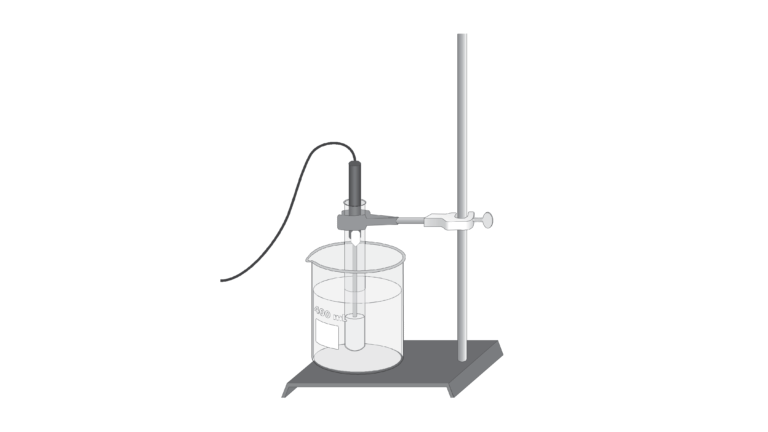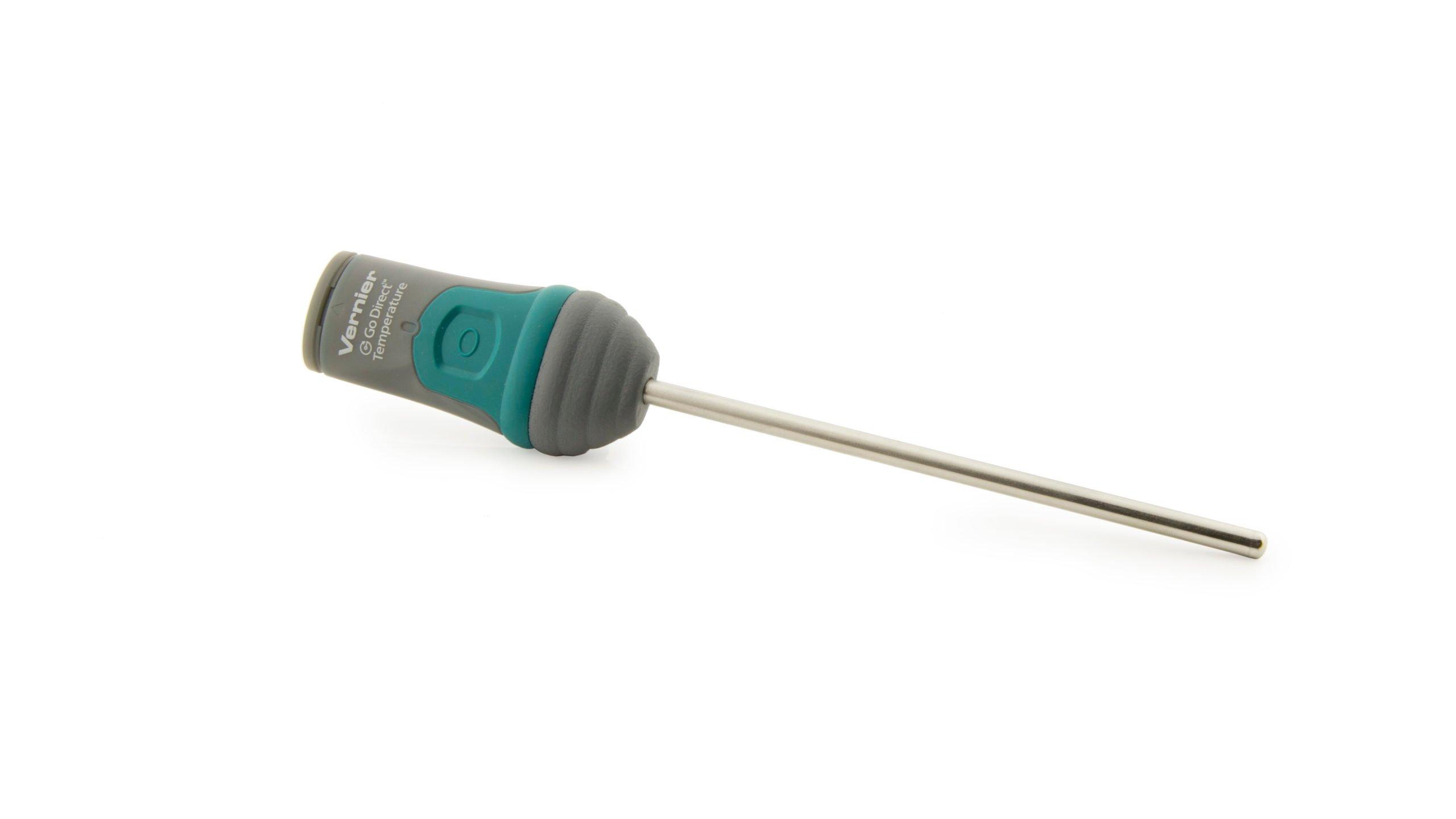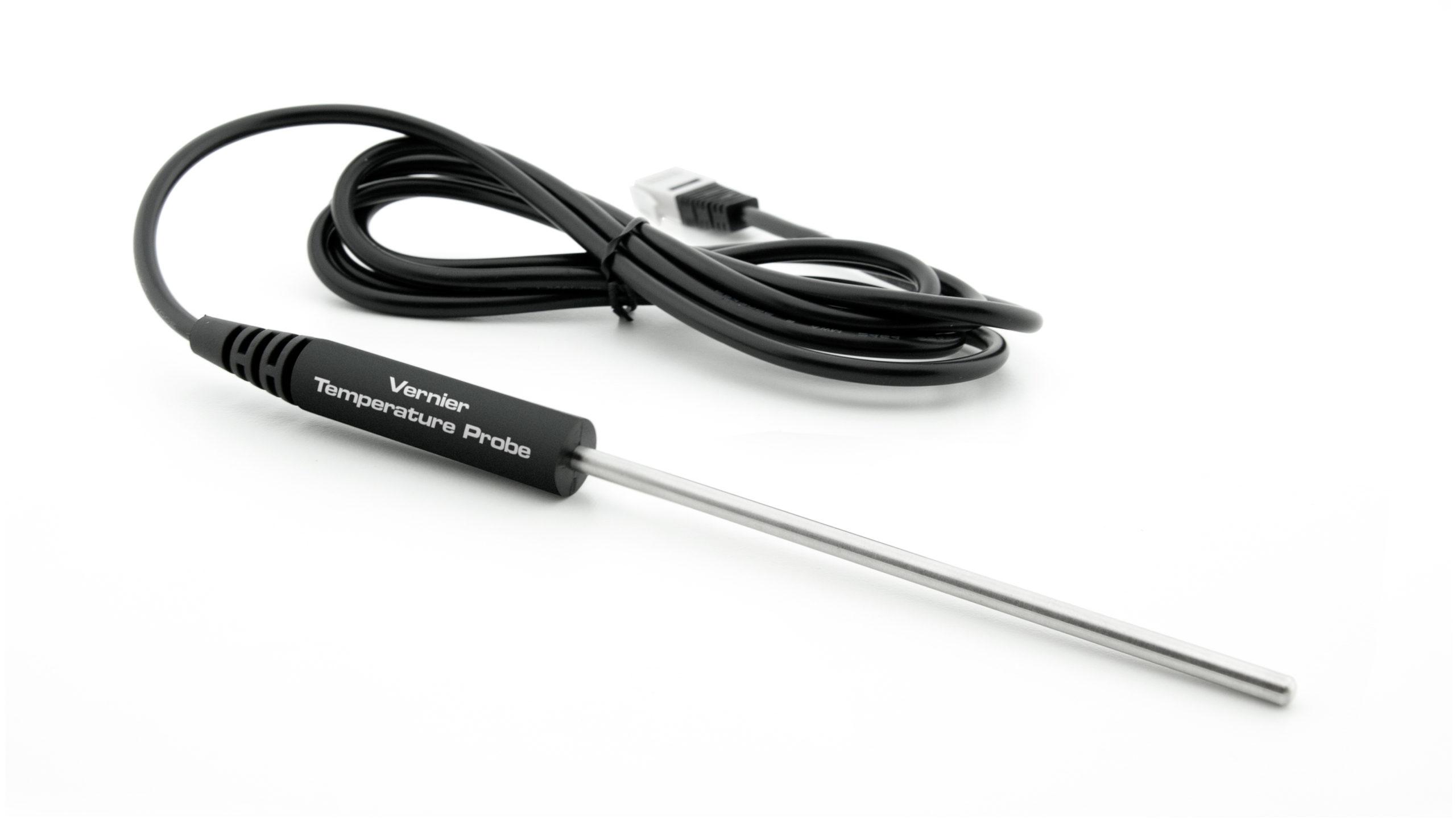Using Freezing-Point Depression to Find Molecular Weight
Experiment #4 from Advanced Chemistry with Vernier

Introduction
When a solute is dissolved in a solvent, the freezing temperature is lowered in proportion to the number of moles of solute added. This property, known as freezing-point depression, is a colligative property; that is, it depends on the ratio of solute and solvent particles, not on the nature of the substance itself. The equation that shows this relationship is
where Δt is the freezing point depression, Kf is the freezing point depression constant for a particular solvent (3.9°C•kg/mol for lauric acid in this experiment), and m is the molality of the solution (in mol solute/kg solvent).
Objectives
In this experiment, you will
- Determine the freezing temperature of the pure solvent, lauric acid.
- Determine the freezing temperature of a mixture of lauric acid and benzoic acid.
- Calculate the freezing point depression of the mixture.
- Calculate the molecular weight of benzoic acid.
Sensors and Equipment
This experiment features the following sensors and equipment. Additional equipment may be required.
Option 1

Ready to Experiment?
Ask an Expert
Get answers to your questions about how to teach this experiment with our support team.
- Call toll-free: 888-837-6437
- Chat with Us
- Email support@vernier.com
Purchase the Lab Book
This experiment is #4 of Advanced Chemistry with Vernier. The experiment in the book includes student instructions as well as instructor information for set up, helpful hints, and sample graphs and data.


